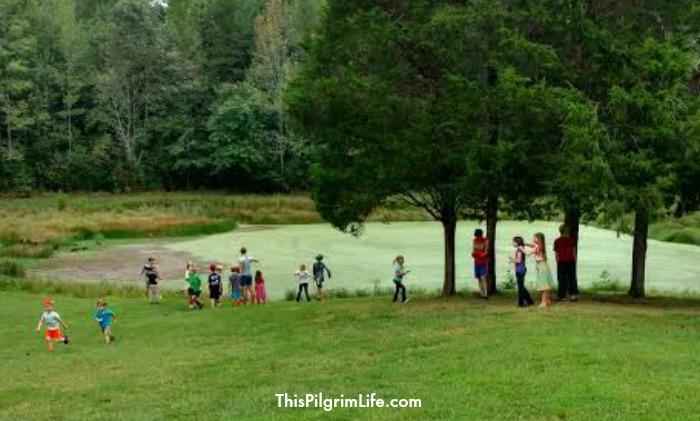
I count our Charlotte Mason homeschool co-op as one of our greatest blessings in life. In our co-op, we have found friendship, community, accountability, a wealth of ideas and inspiration, and so much more.
Not every homeschooling family decides to participate in a co-op, and that is just fine. The ability to choose what is best for your family in whatever season you are in is a significant advantage of homeschooling.
However, there are many families who would love to be a part of a likeminded group of mothers and children, but feel stuck or limited in the options available to them. A family that desires to live and learn according to Charlotte Mason’s principles and philosophies might understandably prefer to join a learning community which also sees education as “an atmosphere, a discipline, and a life”.
In order to have this type of co-op in your area, you may need to be the one to take the initiative and get the ball rolling! Ten years ago that is exactly what my friend Kallie did, and The Cottage Co-op is what came from her efforts. It hasn’t been a perfect ride, there have been bumps and plenty of learning from experience along the way, but what we have now is beautiful and I don’t take it for granted.
Before writing this post, I spoke with Kallie about how she went about starting our Charlotte Mason co-op and what she would want to share with others who are interested in starting their own. Her advice, along with a few of my personal observations, is what you will find below. At the end of the post, you can also find a glimpse into the structure and rhythm of one of our co-op days.
How to Start A Charlotte Mason Co-op
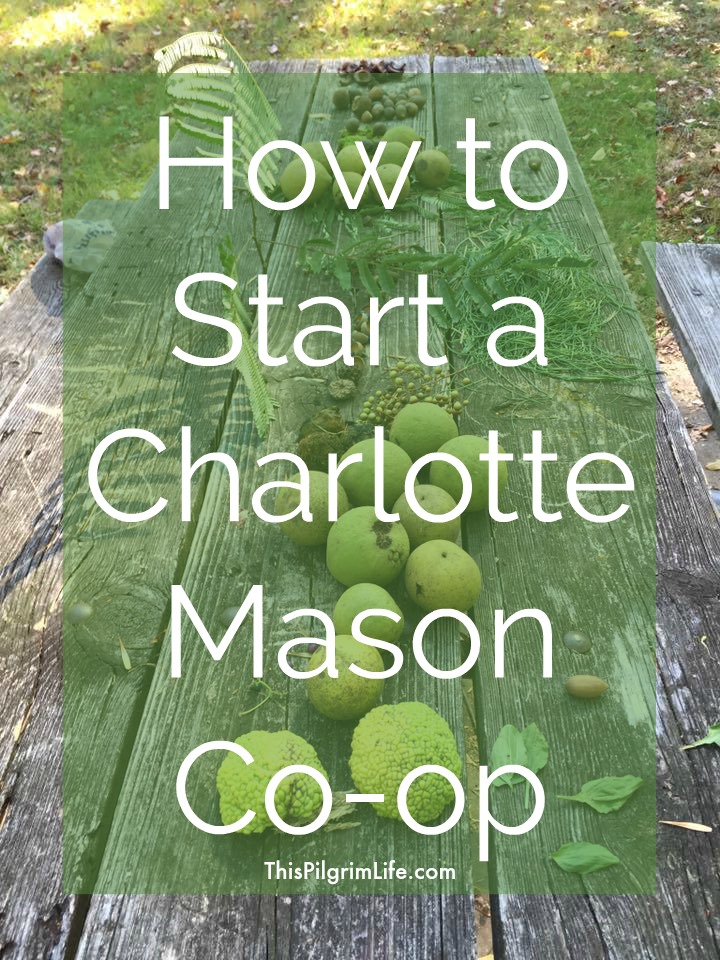
1. Find other local Charlotte Mason moms.
Of course, finding other families to participate in a Charlotte Mason co-op is essential! Ideally, you want to find families which are similarly interested in schooling and living with Charlotte Mason’s principles. Not everyone needs to be as well-versed, but having at least a few mothers/fathers who have studied her writings is helpful in guiding the group and answering questions.
You may already have a small group of likeminded friends who are interested in forming a co-op, but chances are good that more often than not, you will need to reach out and look for families to participate. Online communities can be wonderful for this– ask in mom groups or homeschool groups you are a member in for anyone interested. Simple word of mouth is another fabulous way to build a community and generate interest. Tell your friends you are wanting to start a group and ask if they know of any other CM friends.
Once you begin to make connections with other CM families, try to plan times to meet together to get to know one another, talk about Charlotte Mason’s philosophies, and share resources with each other.
Don’t feel the need to start with a big group! Let the group grow naturally and slowly. Starting with a small core of CM families will help to facilitate relationships and give you an opportunity to figure out a good rhythm for your group.
2. Pick the subjects you want to teach.
Once you have a group of interested families, the next step is to decide which subjects will be the best fit for your group. This can vary a little from group to group, depending on the ages and abilities of the students, though there are a handful of essential elements to a true Charlotte Mason co-op.
Potential Charlotte Mason subjects to teach:
- poetry & narration
- nature study
- composer study
- artist study
- handiwork
- folk song and/or hymn
- swedish drill (physical exercises and games)
- habit/character lessons
- geography
- literature/book study
- Shakespeare
- Plutarch
- foreign language
- Latin
- fine arts
In our co-op, we teach poetry, nature study, artist study, composer study, handiwork, and Shakespeare. We also learn a hymn and a folk song together each “semester”. Swedish drill (physical exercises and games) have been and off and on component of our particular group, as well.
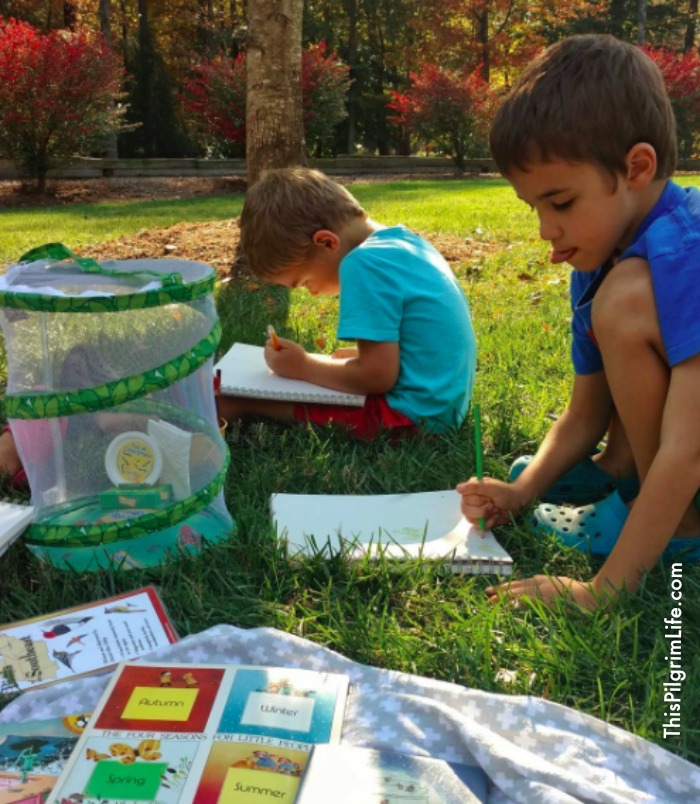
3. Decide how the subjects will be taught.
Charlotte Mason emphasized the importance of short lessons which would keep children’s mind engaged and not give them a chance to become distracted or lose interest. This is just as true in a co-op setting. Whichever subjects you select, the lessons should be kept brief– about 10-15 minutes, varying according to the overall ages of the children.
Who will teach each subject? How often will you switch up teaching responsibilities? How deep will you delve into each subject?
At a planning meeting before each new semester, each mother in our co-op selects a subject to teach and decides upon a particular focus or theme. Often, mothers will stick with the same subjects each year because that is where their interests and expertise are best employed.
We have also found that gentle exposure, rather than over lecturing, is an effective model of instruction in the co-op. Since we meet weekly, families have the opportunity to delve deeper at home if desired.
One final note to mention on the lessons themselves, is how valuable they are for the mothers as well as the children! Encourage the mothers in your co-op to join in with poetry memorization, nature journaling, and the like. Doing so will be enriching for the mothers and will be a great example to the children that the lessons are not only for “school” but are beautiful and meaningful for a lifetime.
4. Figure out the fine details.
Now comes the nitty-gritty. You know who will come to your co-op, what will be taught, and how it will be taught. It is now time to work out the fine details.
Where will you meet? How often? For how long? Will you meet outdoors or indoors? If outdoors, what is your plan for inclement weather? When will each semester begin and end?
Plan a time to meet with the families in your group, or begin a discussion online to work out these details. Our CM co-op has a dedicated Facebook group which has been a great way to ask each other questions, plan events, and share helpful resources we have found.
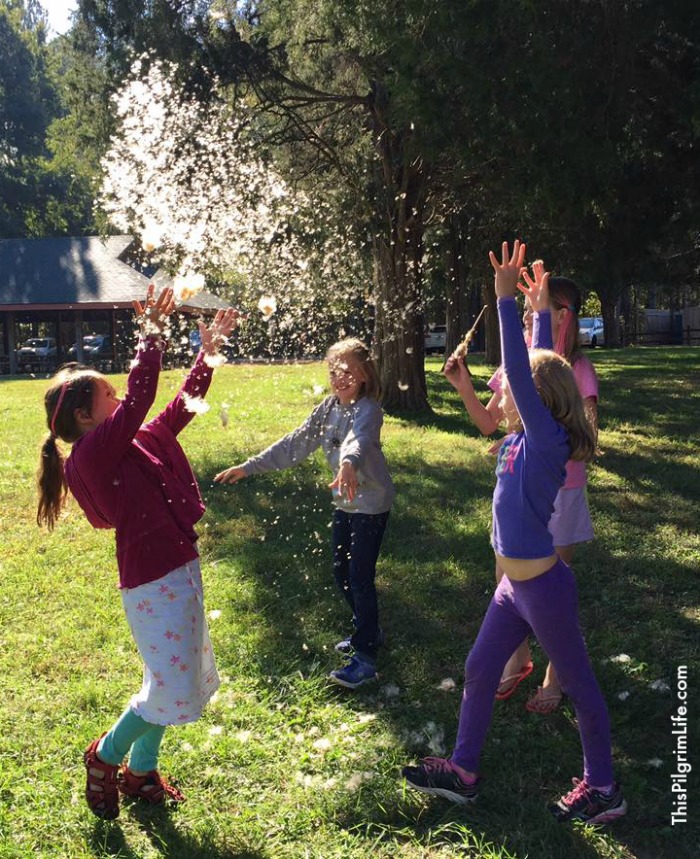
5. Nurture relationships with other moms and with the kids.
This last step is ongoing and hopefully long-lasting. The individual relationships that the mothers have with each other, and the relationships that the children build between themselves, are incredibly important to creating an atmosphere of warmth and community in your co-op. A positive environment among the families will lead to much richer and deeper learning.
Consider starting a moms’ night for the mothers in your co-op. Be intentional about getting to know one another and fostering relationships.
During your moms’ night, you might want to start a book club to help everyone to both get to know one another better, and grow in their understanding of Charlotte Mason’s principles. A few books I would strongly recommend reading are For the Children’s Sake, A Charlotte Mason Companion, and Mere Motherhood. Reading Charlotte Mason’s own writings is, of course, another great option if not a little more challenging reading.
It’s not just the mothers who benefit from additional time outside of co-op, though. We have found that cooking classes, nature walks, and fields trips have been wonderful opportunities for the children to build their friendships and share common interests.
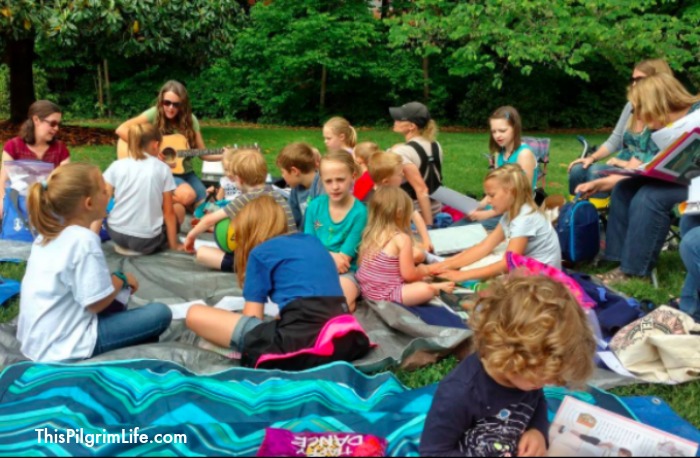
Spend a morning with us at the Cottage Co-op…
I’d love for you to have a chance to come spend a morning with us at our dear little co-op, but that isn’t very practical for most of you. Instead, I will walk you through what we do as we gather together each week.
The first thing to note is that our co-op meets outdoors at a park as often as possible–which is to say, unless it is storming, you will find us with blankets and tarps spread out in both the cool Fall air and the warm Spring sun. Being outdoors together is a central part of our group. It sets the tone, we relish the fresh air, and it means that nature walks and observation are both possible and convenient.
So, once you arrive at the park where we meet, the next step would be to gather all your materials and transport them to the meeting area. For my family, this means the picnic blanket, the camping chair, the bag of nature journals and my co-op notebook, snacks, water bottles, quiet toys for the baby, something to engage my toddler, the big boys’ swords and walking sticks, a pencil box and bag of crayons, our picnic lunch, and probably something I have forgotten at home. Good thing my double stroller doubles as a moving truck.
Running a little late? Not to worry. So are a couple other moms. That’s okay, the first fifteen or so minutes are spent letting the kids run around the field while the moms spread out the blankets and form a perimeter with their camping chairs, bags, and the token easel.
Time to get started!
We begin the morning with poetry. The poetry teacher reads a few selected poems and shares a little bit more about the life of this semester’s poet. We then recite the poems we have been learning together, some families already have these memorized and others are still referencing the handout. Poetry wraps up with a time for the children to stand and recite poems that they have committed to memory. Occasionally, this looks like a preschooler quietly sharing a few lines. Occasionally it is an opportunity for older students to wow us with stanza after stanza of Casey at the Bat.
From poetry we move into singing our hymn together. The teacher may call attention to a few lines from the hymn to discuss. Or we may just go directly into singing. We are fortunate to have a guitar playing mom in our group to lead us in song.
Next comes nature study, my kids’ favorite part. Last semester we learned all about song birds– how to recognize them by sight and sound, as well as other interesting qualities. Nature study typically begins with a short lesson, is followed by time to get up and observe, and closes with a chance for the children to record their findings in their nature journals.
Sit back down! We’re halfway done…
Once the kids are all settled down, (and likely quieted with a small snack), we start artist and composer study. An artist is selected each semester by the teacher, and we learn about his/her life and art. Biographical picture books can be very helpful here. Each family is also equipped with a packet of prints by the artists, and each week we take a few minutes to study the picture, turn it over, and recall what we can from memory. Composer study is similiar– we learn about a composer’s life and listen to a selection of his/her music every week.
In the mood for more music? Good. It’s time to sing our folk song! I LOVE the opportunity to learn all these songs together. We not only enjoy them on co-op days, but regularly during the week (and occasionally when requested at bedtime).
If you feel like we’ve covered a lot so far, that’s okay. We have! But with the short lessons, the intermittent breaks to get up and stretch, and the foresight of a well-timed snack, the morning has been so enjoyable and full of learning!
Co-op lessons wrap up with Shakespeare and/or handiwork. These are purposefully placed at the end of lesson time so that the younger children can be excused to run around in the field or start their lunch if needed. This past spring, we enjoyed reading and acting out A Midsummer Night’s Dream together. The older children probably benefited the most, but even the younger children benefited from exposure and will remember certain aspects of the classic play. (Listening to Beautiful Stories from Shakespeare in the car was super helpful for my kids to learn more of the story outside of co-op!)
You made it! Feel enriched? I do!
And that’s it! Now is the time to either pack up and run a few errands, or if time allows, stay around to play and chat and eat together. Just like kids at school, this free time is arguably the kids’ favorite part of co-op, but is no less important for the children– or the moms!
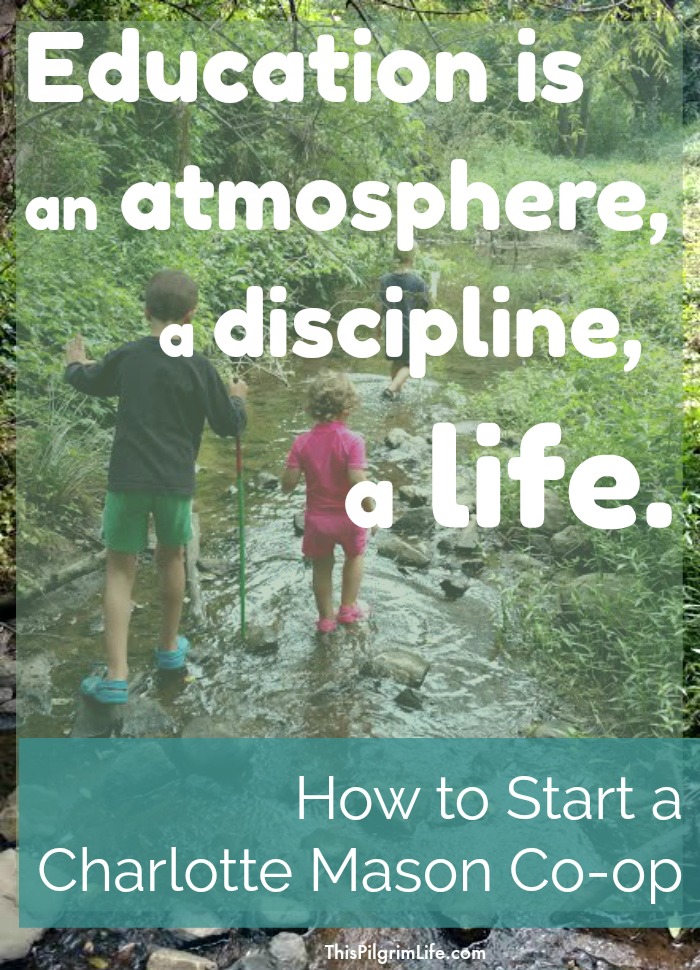
I hope you enjoyed your visit to the Cottage co-op, and I hope you have been inspired to begin your own group of Charlotte-Mason-loving families!
I’d love to hear more from you in the comments, too. Are you already a part of a CM co-op? What do your co-op days look like? Don’t have a group yet? What sounds most appealing to you about joining one?
Don’t forget to check out this list of resources– Charlotte Mason for Beginners. (It says beginners, but it’s full of helpful resources for alllll CM moms!)
Any advice for how to care for younger (0-5ish years) children, especially on days you meet indoors? Thanks!